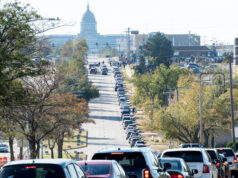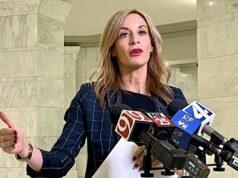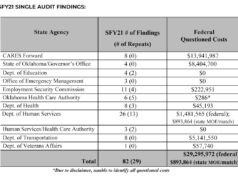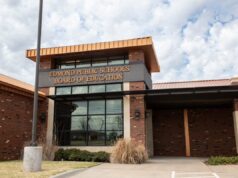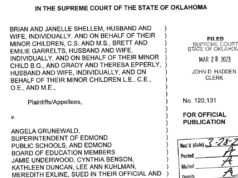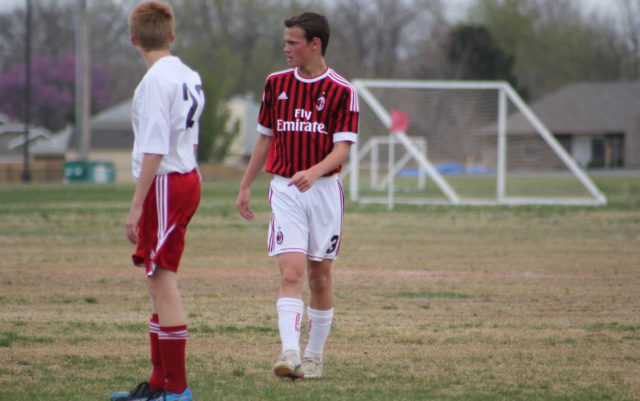

Days passed with a familiar feeling of emptiness.
It was painful to get out of bed, so I didn’t. I had assignments to do, but I couldn’t. Depression, an unparalleled loneliness I’d never felt before, was the only way to describe it. The stress of a looming task was nauseating, made worse by the anxiety and monotony of being stuck at home for days on end.
I often opted for Netflix instead.
I was 16 and bedridden for eight months following a back surgery I’d brought on myself by ignoring an injury for too long. It was a formative time in my life that shaped the way I think about my future, which had drastically changed course. It’s also a time that I thought nobody would ever understand.
Just four years later, however, much of the world would feel that same uncertainty, isolation and fear when the COVID-19 pandemic hit. Living through the pandemic felt eerily similar to my own medical crisis years earlier. And the lessons I learned during my life-altering experience helped me process the globe-altering one we’re still living through, reminding me that a short-term sacrifice often leaves us better off in the long term.
Physical and mental exhaustion
I broke my spine when I was 13.
Though on one level I knew the severity of my injury, I wouldn’t allow myself to accept that it was real. Against the wishes of my family and doctor, and ignoring my own agonizing pain, I continued to play soccer for the next three years.
Soccer dominated my life throughout junior high and high school. It consumed hours each day, taking priority over other extracurriculars and, at times, even schoolwork.
So when I suffered the injury — a bilateral PARS fracture in two lower lumbar vertebrae — I mentally blocked it, or attempted to. I was just about able to trick my brain into believing it had never happened. The injury was serious. It was painful. I knew that sitting out the rest of the soccer season would likely save me from making the injury much worse, but my mind was made up.
After the season, I saw an orthopedist, who recommended two options: have spinal surgery, followed by six months of recovery, or wear a back brace for the summer and hope the fractures healed. I chose the second.
I spent the summer with my torso wrapped in a hot, uncomfortable brace, but my lower back was still in excruciating pain at the end of the recovery period. I was determined to play anyway. I lied to my orthopedist, my parents and myself, saying that the pain had vanished. I even refused the doctor’s request for an additional scan to confirm I had healed. I didn’t want to sit in my house recovering for any longer. I wanted my normal life back.
Three years and well over 1,000 hours of soccer later, I collapsed during practice one day, screaming and gasping on the field.
I spent the next eight months sidelined, surrounded by the walls of hospital rooms and my bedroom. Life became slow and somber. I was confined to my house, isolated from classmates, friends and soccer. In that absence of normality, I spent countless days anxiously dwelling on what could be next, procrastinating on assignments and depressively practicing mental repetitions with an imaginary ball.
I was physically, mentally and emotionally exhausted in ways I had never imagined possible.
Getting back on the field
Before COVID-19 swept through the United States, the pandemic had been brewing around the globe for months. As a society, we ignored the doctors and the facts until, almost overnight, everything changed.
As the United States grasped the enormity of the situation, we knew there were harsh realities to endure, but we couldn’t agree on how to face them. Some chose to ignore them.
Today, I’m back in Norman, and the University of Oklahoma is back to full capacity for the fall semester. The situation on campus is concerning. Few people practice social distancing. Students are “strongly encouraged” to wear masks on campus, but many don’t. In class, professors plead for students to wear masks, citing their unvaccinated children and immunocompromised parents. Their requests are often met with eye rolls — an undignified experience for the professors. Students are asked to use an app to notify their professors of exposures, but the app is seldom used by the university’s 30,000 students.
Just as I yearned to get back to soccer after my injury, we’re all longing to greet friends and family safely. However, like my spine years ago, we’re still not fully there yet. Oklahoma reached 10,000 COVID-19 deaths last month. Hospital staff are at the point of exhaustion as we approach another pandemic-altered holiday season, where the transmission rate will likely increase anew.
Nonetheless, many Oklahomans have decided to ignore these facts, refusing vaccinations and returning to life as though the pandemic doesn’t exist.
I understand their impulsive frustrations. People are tired of being sidelined by COVID-19. And, as I know from experience, it’s surprisingly easy for us to suppress trauma — for our brains to convince us that everything is OK, on both a personal and global level.
But we need to accept that the entire world is injured, suffering a karmic stress fracture more severe than we may fully recognize for a long time to come. Rushing back into normal life before the injury has healed will only make things worse. But if we take measures to protect our collective health now, we’ll be back on the field in no time.









